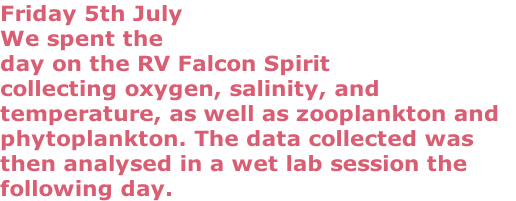





All opinions expressed are of our own, and not of the University of Southampton

Introduction
Seven stations were sampled on the lower part of the Tamar Estuary.
The River Tamar’s source is at Woolley Moor which is located 6km from the north Cornish coast, the River, however, flows South for 98km before reaching the coast at Plymouth. The River Tavy and Lynher River flow into the River Tamar close to the estuary. The Tamar estuary is a ria estuary, with its upper parts having a very well developed salinity gradient, making it a very good example of changing estuarine communities with changing salinity regime. It is also one of the few estuaries where zonation of intertidal and subtidal rocky habitats can be observed along an estuarine gradient.
The fieldwork was conducted on an ebb tide stating after high tide of 5.31m at 07.35 UTC and finished before low tide at 13.44 UTC of 0.79m. There was a wind force of 2 in an ESE direction with good visibility.
At the first station, two niskin bottles were fired from a CTD-
Silicate, Phosphate, Nitrate/Nitrite
Water samples were filtered and syringed into bottles for lab analysis. Samples were
auto-
Chlorophyll
3x50ml samples from each niskin bottle were filtered simultaneously on a filtering rig. Filter paper was collected and stored in acetone. These bottles were labelled and stored in a freezer in the lab overnight, with the freezer acting as a sonicator. This bursts the phytoplankton cells which are adhering to the filter paper causing the chlorophyll to be released into the acetone solution. The test tubes are then removed from the freezer, and then filter paper is removed as there should be no more chlorophyll attached to it. For each sample, the acetone solution must be placed into a new test tube, and this test tube is then placed into the fluorometer. The lid is then placed on, and the test is run. The chlorophyll concentration is then given in µg/L. This must then be converted to the total chlorophyll concentration at each site by the following equation:
Methodology
Encyclopedia Britannica. (2019). River Tamar | river, England, United Kingdom. [online]
Available at: https://www.britannica.com/place/River-
Sac.jncc.gov.uk. (2019). Plymouth Sound and Estuaries -
Tidetimes.org.uk. (2019). Plymouth (Devonport) Tide Times for 5th July 2019 |
TideTimes.org.uk. [online] Available at: https://www.tidetimes.org.uk/plymouth-
The samples were then transferred to the waste bucket after use.
Phytoplankton
The collected sample was not analysed as it gave no meaningful context as a standalone sample for the whole river transect.

